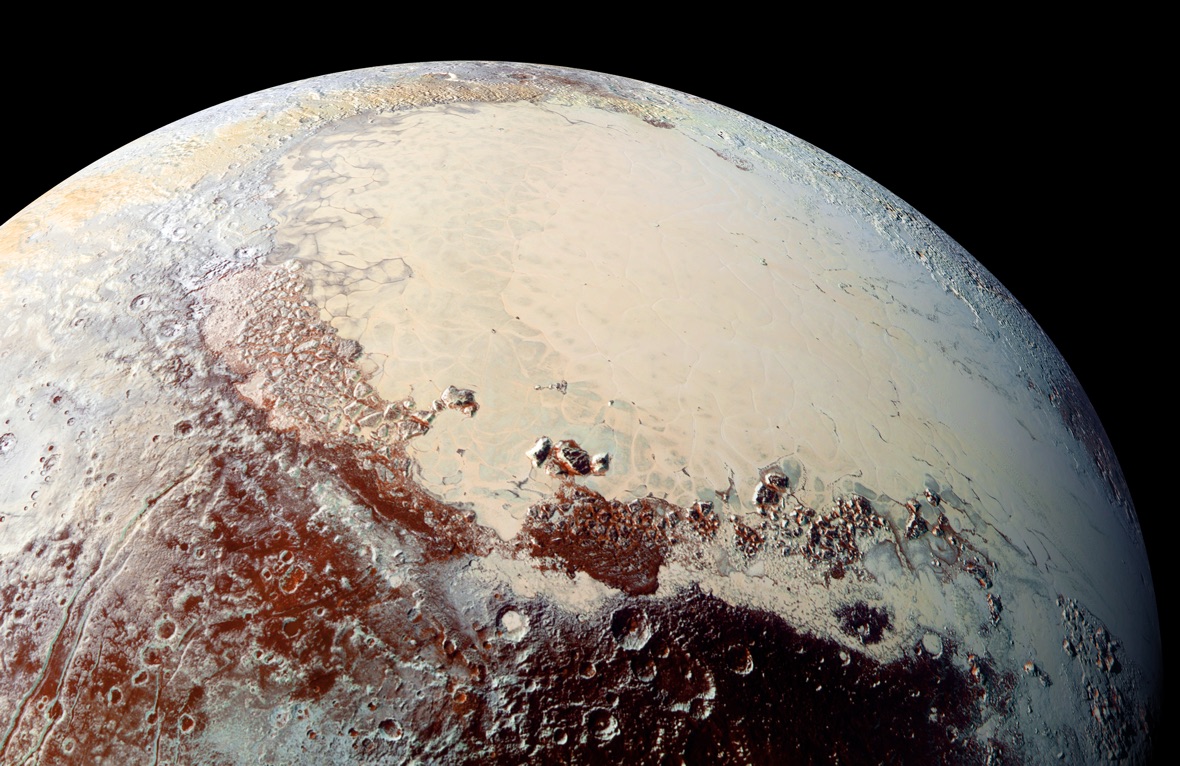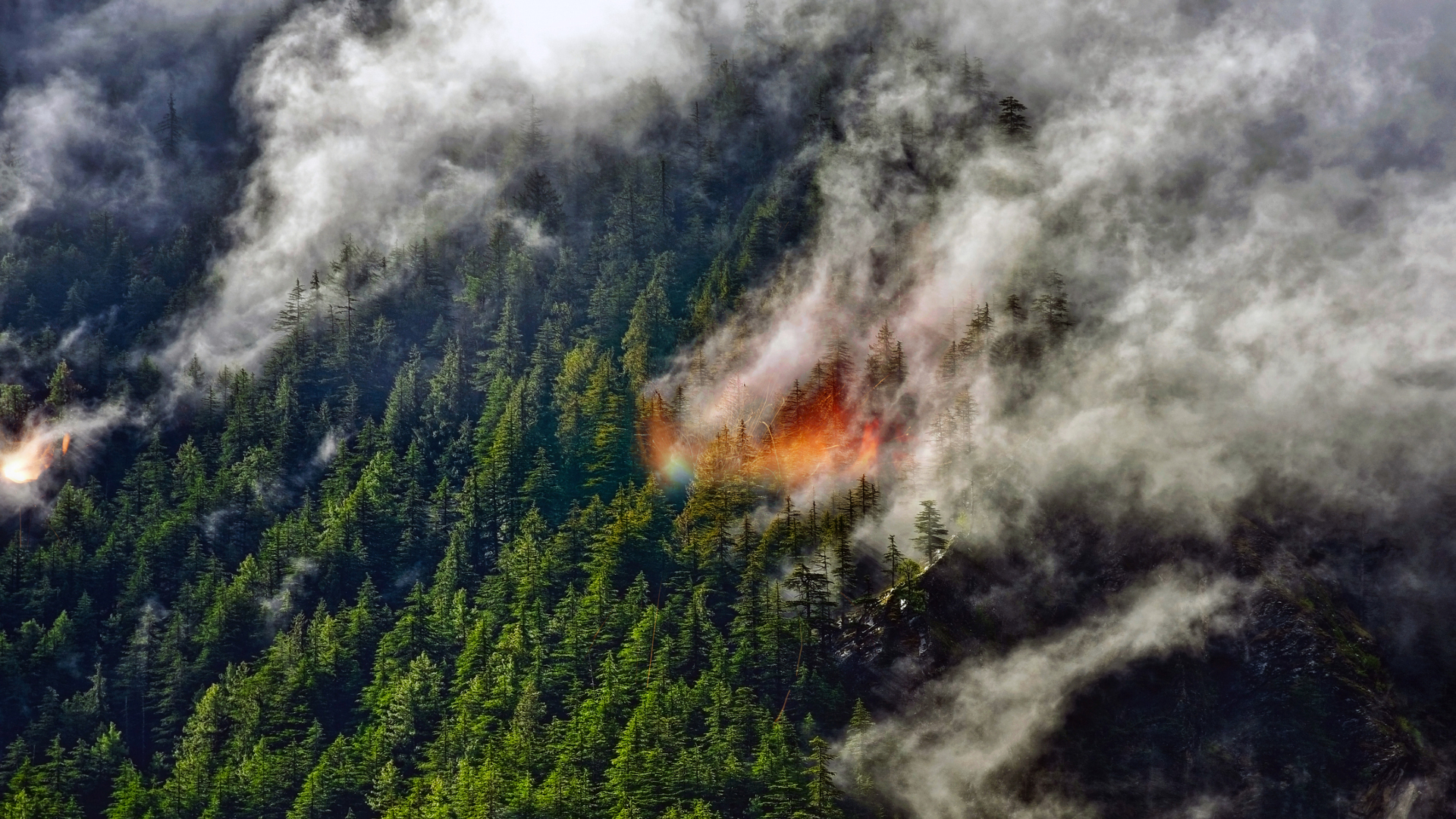On Icy Pluto, Volcanoes May Spout Liquid Water

A whiff of ammonia in reddish ices on Pluto may be evidence of recent geological activity on the dwarf planet, with liquid water spewing out from Pluto's depths like molten lava would on Earth, a new study finds.
These findings suggest that Pluto may harbor at least some features favorable to the evolution of life, researchers said.
Scientists analyzed data that NASA's New Horizons probe gathered during its flyby of the dwarf planet in 2015. In this data, they found evidence of ammonia on Pluto's surface in areas that previous research suggested had experienced tectonic activity.
Related: Photos of Pluto and Its Moons
"In recent years, ammonia has been a bit like the 'holy grail' of planetary science," study lead author Cristina Dalle Ore, a planetary scientist at NASA's Ames Research Center in Moffett Field, California, told Space.com. One reason for this is that ammonia is a key ingredient in chemical reactions underlying life as we know it, "and therefore, when found, it flags [the presence of] an environment that is conducive to life. This does not mean that life is present — and we have not yet found it — but it indicates a place where we should look."
Ammonia "is a fragile molecule and gets destroyed by ultraviolet irradiation as well as cosmic rays," Dalle Ore said. "Therefore, when found on a surface, it implies that it had been emplaced there relatively recently, some million years before [being found]."
The researchers suggested that when deposited on Pluto's surface, the ammonia was already mixed in with water from an underground ocean hidden within the dwarf planet. This water may have found its way out "through cracks or vents and was sprayed on the surface," Dalle Ore said. "We call this cryovolcanism."
Breaking space news, the latest updates on rocket launches, skywatching events and more!
That Pluto might possess liquid water may seem surprising, as the dwarf planet's surface is about minus 390 degrees Fahrenheit (minus 270 degrees Celsius), more than cold enough to freeze air. However, heat from radioactive ores makes Pluto's depths warmer than its surface, and "ammonia, when mixed in water, acts like an antifreeze and therefore allows water to be liquid at temperatures that would otherwise be too cold," Dalle Ore said.
All in all, the presence of ammonia in water makes it possible for a liquid ocean to exist under the icy crust of the dwarf planet, Dalle Ore said. The extent of this ocean remains unknown; it may consist of only a few pockets of liquid water, or it could constitute a watery layer under the entire surface of Pluto, she noted.
"My next task is to try to determine the location of all the vents from which water and ammonia might have been sprayed in an attempt to map the size of the ocean," Dalle Ore said.
The scientists detailed their findings online May 29 in the journal Science Advances.
- Pluto Flyby Anniversary: The Most Amazing Photos from NASA's New Horizons
- Pluto Quiz: How Well Do You Know the Dwarf Planet?
- 6 Most Likely Places for Alien Life in the Solar System
Follow Charles Q. Choi on Twitter @cqchoi. Follow us on Twitter @Spacedotcom or Facebook.

Charles Q. Choi is a contributing writer for Space.com and Live Science. He covers all things human origins and astronomy as well as physics, animals and general science topics. Charles has a Master of Arts degree from the University of Missouri-Columbia, School of Journalism and a Bachelor of Arts degree from the University of South Florida. Charles has visited every continent on Earth, drinking rancid yak butter tea in Lhasa, snorkeling with sea lions in the Galapagos and even climbing an iceberg in Antarctica. Visit him at http://www.sciwriter.us
